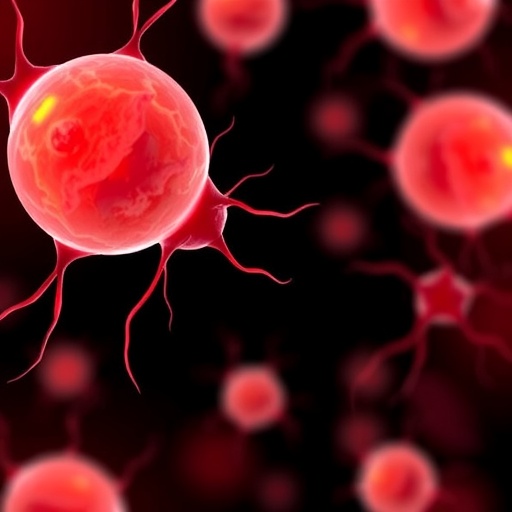In a remarkable breakthrough poised to reshape our understanding of male reproductive health, a recent study has unveiled the potent therapeutic effects of atorvastatin in the treatment of chronic orchitis, a persistent inflammatory condition that severely impairs spermatogenesis. Chronic orchitis, which inflicts enduring damage to testicular tissue and disrupts fertility, has long eluded effective treatments. However, new evidence highlights how atorvastatin, a widely prescribed cholesterol-lowering statin, can restore the integrity of critical blood-testis barriers, consequently revitalizing sperm production in both murine models and in vitro human systems. This discovery heralds a novel application of a familiar drug, underlining the expanding frontier of translational medicine.
Atorvastatin’s role in managing dyslipidemia is well documented; yet, its unexpected impact on testicular inflammation and function opens an entirely new avenue in reproductive therapeutics. The blood-testis barrier (BTB) is a specialized, tightly regulated structure formed by Sertoli cells, essential for maintaining an immune-privileged environment critical for germ cell development. Chronic orchitis compromises this barrier, leading to an influx of inflammatory cells and harmful agents that disrupt spermatogenesis. The recent research demonstrates that atorvastatin effectively restores BTB integrity, reversing damage caused by persistent inflammation.
A combination of in vitro human cell cultures and murine models validated the findings, providing compelling evidence across species and experimental conditions. Inflammatory cytokine profiles, histological analysis, and functional sperm parameters collectively confirmed that atorvastatin preserves the BTB’s ultrastructure and function. This multifaceted approach underscored the drug’s ability to attenuate inflammatory pathways and enhance Sertoli cell barrier tightness, thus reinstating an environment conducive to healthy sperm development.
The mechanism underlying atorvastatin’s restorative effect is partially attributed to its anti-inflammatory and antioxidant properties. Statins inhibit the enzyme HMG-CoA reductase, reducing cholesterol synthesis, but they also modulate inflammatory signaling cascades. The study delves into the molecular crosstalk influenced by atorvastatin, highlighting decreased expression of pro-inflammatory mediators such as TNF-α and IL-6, alongside a reduction in oxidative stress markers within the testicular microenvironment. This biochemical shift facilitates repair processes within the BTB, underscoring the drug’s pleiotropic influence beyond lipid regulation.
Chronic orchitis often results from persistent infections, autoimmune responses, or idiopathic causes, and it represents a significant clinical challenge due to its stubborn resistance to conventional therapies. Patients frequently suffer from infertility or subfertility as testicular inflammation damages germ cells and their supporting niches. The ability of atorvastatin to modulate the blood-testis barrier presents a paradigm shift, introducing a potent pharmacological tool for reversing damage rather than merely alleviating symptoms.
The researchers meticulously evaluated various parameters of spermatogenesis including sperm count, motility, and morphology post-atorvastatin treatment, all of which showed significant improvement compared to untreated controls. Animal models displayed marked histological recovery with reduced seminiferous tubule degeneration and normalization of germinal epithelium architecture. Human in vitro models using testicular biopsies exhibited similar trends, reinforcing the translational applicability of these findings.
Another intriguing aspect of this study is the potential synergy between atorvastatin’s lipid-lowering effects and reproductive health maintenance. Cholesterol metabolism is intricately linked to steroidogenesis, a key process in hormone production required for spermatogenesis. By optimizing lipid profiles within the testicular environment, atorvastatin may enhance testosterone synthesis indirectly, thereby supporting the hormonal milieu essential for robust sperm development.
This multifactorial influence suggests atorvastatin’s therapeutic window may extend beyond inflammation control to include modulation of endocrine factors, generating a comprehensive recovery landscape in chronic orchitis. The capacity to combat inflammation, oxidative stress, and hormonal imbalance simultaneously is unprecedented within the current therapeutic arsenal for male infertility linked to chronic testicular inflammation.
Given atorvastatin’s well-characterized safety profile and existing clinical use, the translational potential for rapid clinical trials is promising. Its repurposing for chronic orchitis management could dramatically speed up the availability of effective treatments, providing relief for millions of men worldwide who face infertility due to unresolved testicular inflammation.
The investigation also sheds light on the broader implications for other reproductive pathologies where blood-testis barrier compromise plays a role, such as varicocele, testicular trauma, and certain forms of chemotherapy-induced gonadotoxicity. The prospect of protecting or restoring BTB integrity could revolutionize treatment protocols across a spectrum of male reproductive disorders.
Moreover, this research underscores the vital need for interdisciplinary approaches, combining pharmacology, reproductive biology, and immunology to devise innovative solutions for complex conditions like chronic orchitis. It also highlights how existing drugs can be repurposed ingeniously when molecular pathways are understood in greater depth.
Future studies will need to explore optimal dosing regimens, long-term effects, and the potential benefits of combining atorvastatin with other therapeutic agents such as antioxidants or anti-inflammatory peptides. Additionally, clinical trials involving diverse patient populations will be essential to validate efficacy and safety in humans under a broad range of conditions associated with testicular inflammation.
The reproducibility of these results across both murine and human in vitro models strengthens confidence in the translational value of atorvastatin. It also illustrates the power of preclinical research to inform and accelerate clinical innovation, bridging the gap between bench science and bedside application.
In conclusion, this pioneering work positions atorvastatin as a promising candidate for enhancing male reproductive health by targeting the blood-testis barrier and mitigating chronic orchitis-induced damage. This represents a breakthrough in the fight against male infertility, offering hope for effective treatment strategies where previously options were severely limited. As research advances, the integration of statins like atorvastatin into reproductive medicine protocols could herald a new era in managing complex inflammatory conditions that compromise fertility.
Subject of Research: Atorvastatin’s therapeutic effects in restoring blood-testis barrier function and improving spermatogenesis in chronic orchitis models.
Article Title: Atorvastatin improves spermatogenesis in murine and in vitro human chronic orchitis models through restoring blood-testis barriers.
Article References:
Ma, L., Chen, J., Li, Q. et al. Atorvastatin improves spermatogenesis in murine and in vitro human chronic orchitis models through restoring blood-testis barriers. Cell Death Discov. 11, 505 (2025). https://doi.org/10.1038/s41420-025-02749-6
Image Credits: AI Generated
DOI: 06 November 2025




